|
The Woodland Education Centre |
|
|
The Woodland Education Centre |
|
Ecological Survey 2001
These descriptions
build upon the descriptions of the sections given in the 2000 ecological survey and should
be read in conjunction for maximum benefit. |
Section 9 Description (Hand Weeded)
Observations 2000 - 2001
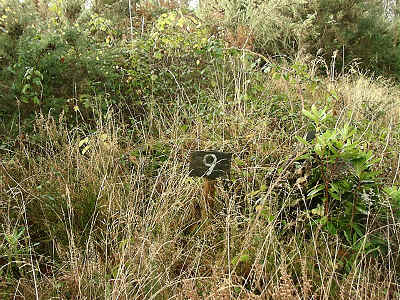 |
Six years after the start of experimental management and succession was beginning to take place in section 9, despite the hand weeding regime. |
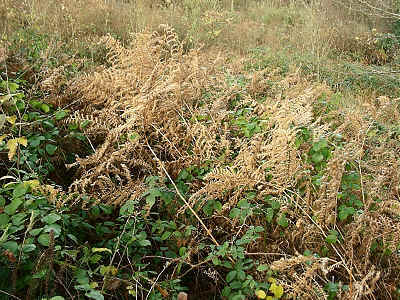 |
As in the
preceding year, bramble (left
- amongst bracken) was the dominant
species, occurring in virtually all of the quadrats sampled. It had increased in abundance over the year. |
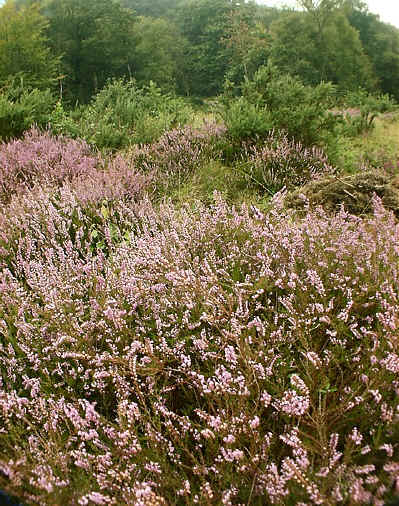 |
This section still contained
the greatest abundance of Heather (left) on the project site. The well-established Heather bushes had increased substantially in height and girth, with many of the older bushes becoming coarse and rank with quite open crowns. |
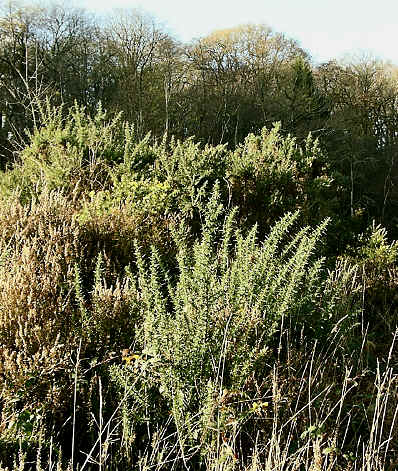 |
The European Gorse (left) had grown substantially, reaching
a maximum height of 250cm in places across the centre of the section. Gorse had also increased in abundance since the previous year.
|
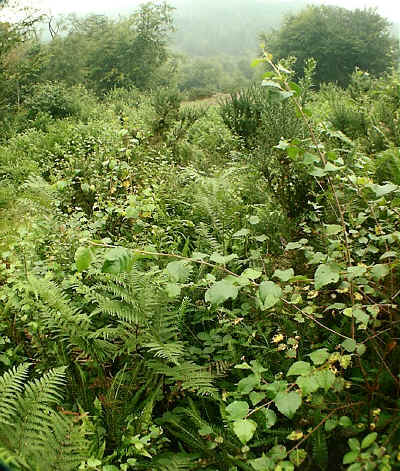 |
Silver Birch
(left) had increased and was the second most dominant species
after bramble. Many of the birch saplings were by now up to160cm tall Other tree species which were well established were cherry, willow and Rowan. Many of these were beyond pulling by hand. Patches of rhododendron were also becoming re-established in isolated places.
|
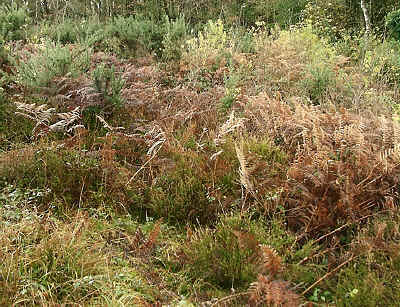 |
Bracken (left - dead, brown fronds)- continued to encroach in the extreme top and bottom areas of the section. |
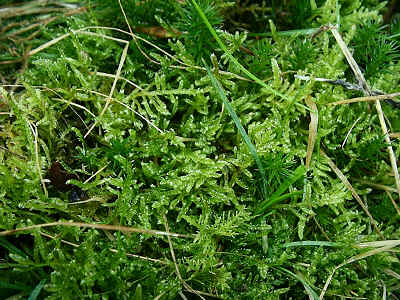 |
Patches of more open ground
supported a varied moss flora (left), including Polytrichum formosum and Hypnum jutlandicum, (both species commonly found on heaths), as well as Thuidium tamarascinum. Rhytidiadelphus squarrosus , another characteristic moss of heaths, was recorded for the first time in section 9 this year, as well as in adjacent section 8. |
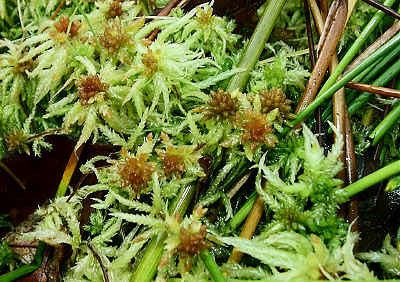 |
Sphagnum moss (left) was recorded in boggy areas alongside the neighbouring wet woodland habitat. |
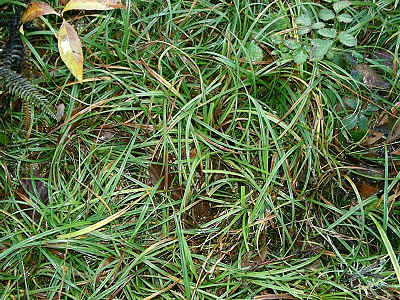 |
Sedges (left) were common in patches, although
overall they were not dominant. These were mainly Pill Sedge, Smooth-stalked Sedge and
Green-ribbed Sedge. This section supported quite a variety of different grasses, including several different species of Bents (Agrostis spp.), Purple Moor Grass, Sweet Vernal Grass and Yorkshire Fog. Yorkshire Fog had decreased and was no longer classed as a dominant species in this section. |
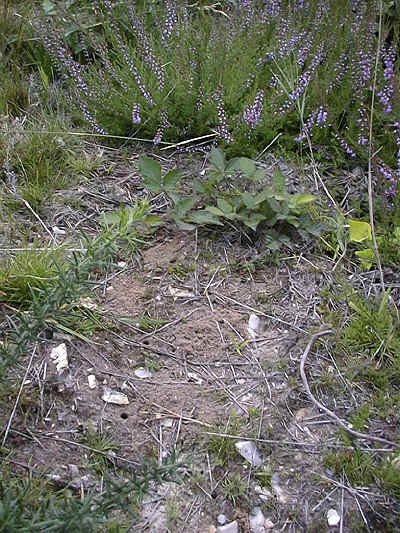 |
Open patches of bare sandy
ground were still clear in parts of the section (left). These had often been colonized by ants and solitary wasps. |
Dominant Plants in
Section 9 in 2001
with figures from 2000 for comparison.
Characteristic heath species are in bold print
| Species | Overall % frequency | Mean % Cover (all quadrats) | ||
| 2001 | 2000 | 2001 | 2000 | |
| Bramble | 91 | 72 | 27 | 22 |
| Silver Birch | 71 | 50 | 17 | 15 |
| Polytrichum formosum | 68 | 66 | 37 | 32 |
| Heather | 68 | 63 | 44 | 38 |
| Thuidium tamarascinum | 65 | 63 | 25 | 25 |
| Hypnum jutlandicum | 53 | 38 | 21 | 17 |
| European Gorse | 47 | 31 | 23 | 10 |
| Pill Sedge | 41 | 9 | 6 | 2 |
| Eurhynchium praelongum | 41 | 35 | 16 | 9 |
| Velvet Bent | 21 | 53 | 3 | 16 |
| Common Bent | 35 | 47 | 11 | 18 |
| Cherry | 27 | 22 | 5 | 3 |
| Percentage frequency = the percentage of the total number of quadrats sampled over the whole site which contain the species. For example, a percentage frequency of 100%, means that the species was found in all quadrats sampled. |
>> Continue to Control Section
Ecological Survey 2001 |